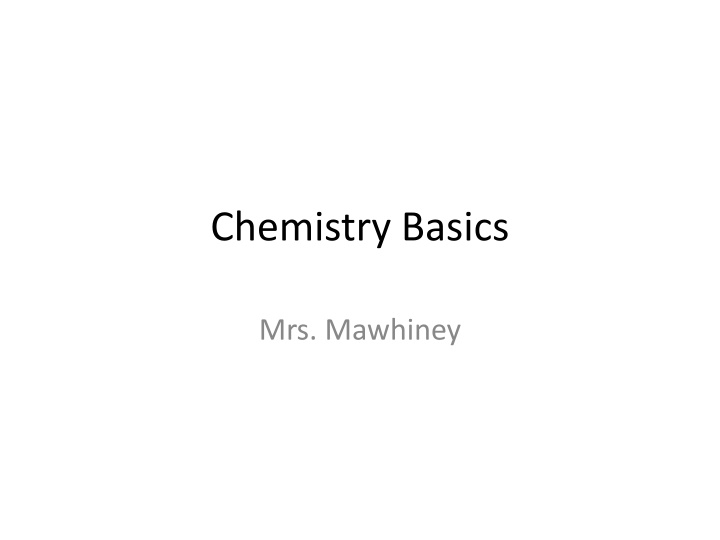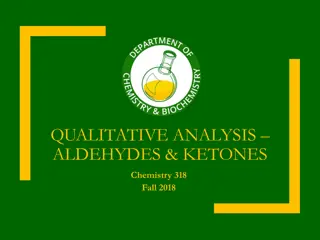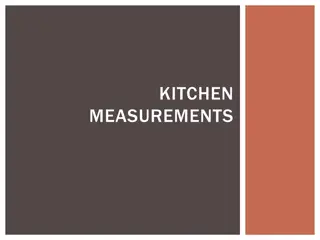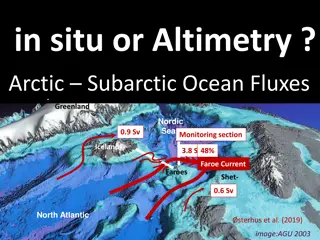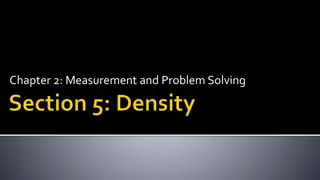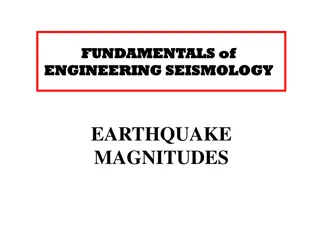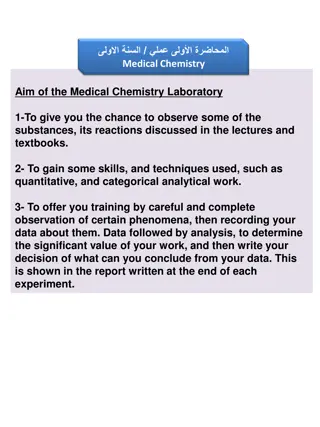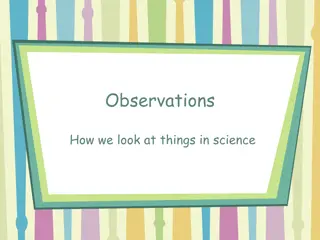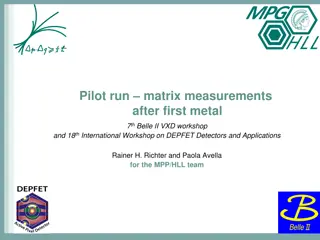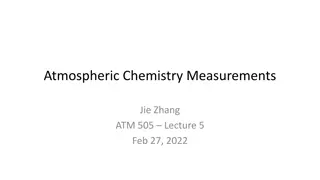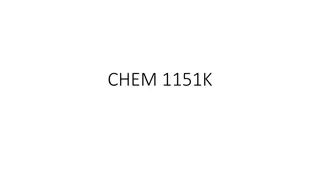Basics of Chemistry Observations and Measurements
Understanding the basics of chemistry involves making qualitative and quantitative observations, measuring using the metric system, and distinguishing between mass and weight. Learn about significant figures, SI units, and the importance of accuracy and precision in scientific calculations.
Download Presentation

Please find below an Image/Link to download the presentation.
The content on the website is provided AS IS for your information and personal use only. It may not be sold, licensed, or shared on other websites without obtaining consent from the author.If you encounter any issues during the download, it is possible that the publisher has removed the file from their server.
You are allowed to download the files provided on this website for personal or commercial use, subject to the condition that they are used lawfully. All files are the property of their respective owners.
The content on the website is provided AS IS for your information and personal use only. It may not be sold, licensed, or shared on other websites without obtaining consent from the author.
E N D
Presentation Transcript
Chemistry Basics Mrs. Mawhiney
There are two types of observations: Quantitative observations involve measurements or estimates that yield meaningful, numerical results. Qualitative observations yield descriptive, nonnumerical results.
Comparison of Qualitative and Quantitative Observations Quantitative and Qualitative Observations Compared Qualitative (words only) Quantitative (words and numbers) The girl has very little money. The girl has 85 cents. The man is short. The man is 5 feet 2 inches tall. Use a small test tube. Use a test tube that is 12 centimeters long. It is a short walk to my house. It is about 1 mile to my house.
How do we measure? The metric system is an international decimal- based system of measurement. Because the metric system is a decimal system, making conversions between different units of the metric system are always done with factors of ten.
SI Units Measurement Mass Length Time Temperature Quantity Energy Pressure Unit Kilogram Meter Second Kelvin Mole Joule Pascal Symbol kg M s K mol J Pa
Mass and weight What s the difference? The mass of an object is a measure of the amount of matter in it. The basic unit of mass in the International System of Units is the kilogram. The weight of an object is the force of attraction between the object and the earth (or whatever large, gravity-producing body the object is located on).
No Calculator Vomit!!! In Science we use significant figures! We like accuracy and precision!! 2732100000000000
Counting Significant Figures Atlantic / Pacific Method a. Absent Decimal- Start on atlantic side of number & cross out all zeroes until 1st nonzero digit is reached, remaining digits are significant b. Present decimal- start on the pacific side of the number & cross out all zeros until the 1st nonzero digit Is reached, remaining digits are significant
How many significant figures are in each of the following measurements? 24 mL 2 significant figures 4 significant figures 3001 g 0.0320 m3 3 significant figures 6.400 x 104 molecules 4 significant figures 560 kg 2 significant figures
Density Demo After watching the demonstration, what can you tell me about the reason ice floats in water. Ice is made up of water right??
